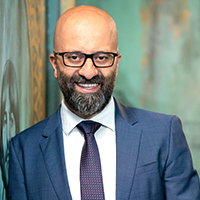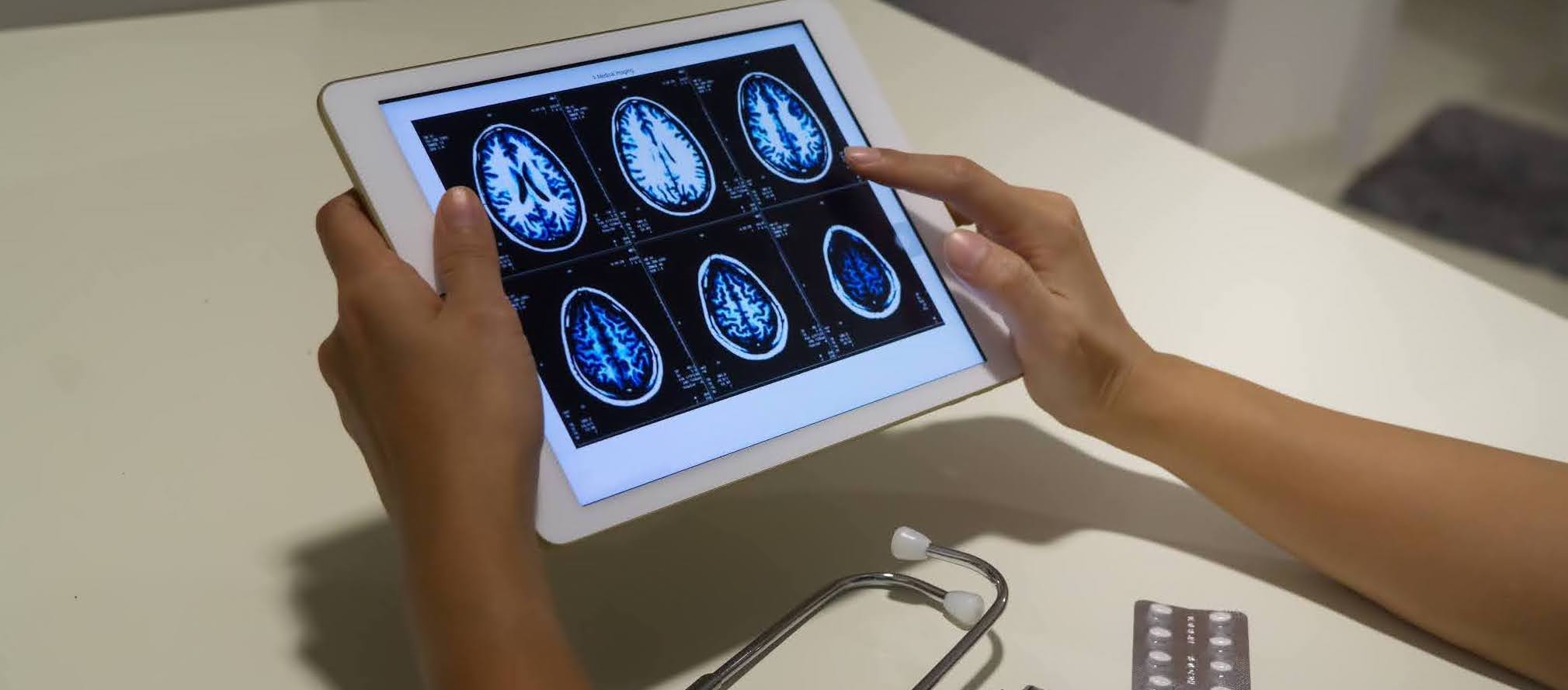An effective healthcare system must be flexible enough to adapt to the needs of a changing population. In Australia, life expectancy is 81.5 years – among the highest in the world. In order to secure the sustainability of Australia’s healthcare, we need to address what the implications of an ageing population are, and consider next steps in order to move confidently into the future.
Here are seven insights into the impact an ageing population will have on healthcare and how we could contribute to a system that’s built to last.
What’s on the healthcare horizon? Insights and opportunity for the healthcare leaders of tomorrow
1. Insight: The ageing population is growing...
… In fact, “the number of people over 85 years old will increase from 0.4 million now to 1.8 million in 2050.” – APH
However, as it turns out, the ageing population may not end up being the primary cause of increased health costs.
Stephen Duckett, of the Grattan Institute, said the institute had analysed the cause of increased spending on health and found, “the pure ageing component is relatively small.” He explained that warnings that focused only on costs overlooked the higher quality of care. A commitment to patient-centred care, the investment in multidisciplinary ecosystems, and the innovations in medical treatments mean many patients living with chronic illnesses can lead increasingly normal lives. The proactive and patient-centred approach prioritises early detection, preventive measures and personalised care.
The takeaway here is not to panic over the sustainability of healthcare simply due to an ageing population. Instead, it would be wise to consider how to redesign the system for future generations.
2. Insight: As the older generation moves through an ecosystem of coordinated care, the focus must become about prolonging the quality of life.
What are the implications of an ageing population in Australia? Well, formerly the focus of an elderly patient’s treatment was hospital-based; following a consultation, they were admitted, treated, and then later discharged. Looking ahead, aged care will happen less in a hospital and more so within one’s home, community or patients visiting local health professionals. This may be one of the reasons the ageing population won’t be the cause of increased costs to primary care, since they’re receiving different and efficient types of care.
“Many tests or services which are now performed in hospitals will be carried out in people's homes or lower cost locations,” writes Professor Jeffrey Braithwaite, a leading researcher and writer, and the Founding Director of the Australian Institute of Health Innovation at Macquarie University. Whether an older person remains in their home or moves to a residential aged care facility, he says, they will be supported by roaming medical services, which are far reaching and more cost effective.
3. Insight: The number of hospital admissions is on the decline, and that’s a good thing.
“Perhaps Australia needs different health professionals, working closer to our homes, shopping centres, sporting grounds and workplaces to keep baby boomers away from the expensive hospitals and doctors,” says Professor Sandra Leggat, who researches health services and policy reform.
We aren’t the only country experiencing a rapidly ageing population.
By looking to Japan, Canada and Switzerland, we may uncover strategies worth considering as our own population continues to age.
For example, in such countries, hospital beds are being cut back in favour of day procedures and community healthcare. In fact, Japan aims to move from 8500 to 7000 hospitals within 15 years.
All three countries are seeking to create more retirement home beds and aged care facilities. In Canada and Japan, primary health services are being reorganised into communities of physicians, in an attempt to improve coordination, coverage, and reduce costs.
4. Insight: Encouraging cost effective investment in preventive health is key. With leaps and bounds in many areas of medicine, the purpose of aged care has changed focus from prolonging life, to improving quality of life.
The prevalence of many health conditions is higher in older age groups, thus the purpose of healthcare for the aged is believed to be shifting: from the prolonging of life to prolonging one’s quality of life. Doctors routinely incorporate preventative health into their consultations, while also educating patients and increasing their capacity to maintain their own health.
“There is broad agreement that Australia should be investing more in preventive health, but it is not always clear how to do so cost effectively, especially for complex health problems such as obesity or diabetes.
More evidence on the clinical and cost effectiveness of specific preventive health measures is needed, and should be gathered through advice from private insurers, and trials and evaluations.” – Productivity Commission
Multi-level intervention is one of the key facets of successful preventative health. This is where government or NGO-led strategies factor in, such as well established screening programs for breast and cervical cancer, and nationwide bowel screening kits.
5. Insight: While healthcare as an industry is booming and more and more people are joining the health workforce, shortages persist in certain specialties and geographical areas.
Research demonstrates that older people are more likely to visit health professionals than younger people, but they are also more likely to have multiple long term health conditions. For example, people aged 75 years and over experience common age-related health problems, such as arthritis, dementia and hypertensive disease. However, the new wave of retirees, aged 65 to 85, are experiencing chronic health conditions, such as type 2 diabetes, at far higher rates than previous generations.
Implementing the right regulations could help alleviate some of this pressure on healthcare demand.
For example, health professionals (specialists, GPs, registered nurses, allied health professionals, paramedics and support teams) each have a ‘scope of practice’, referring to tasks they are allowed to perform. This can limit the ability of healthcare services to respond to patient needs, particularly as that need grows.
Researchers have therefore, identified certain tasks that could be performed just as safely and effectively by other professionals. The Productivity Commission assert, “Such role expansions could result in better coordinated patient care and improved job satisfaction for health professionals”.
With necessary investment in training a new generation of health practitioners, while also evaluating role expansions, the future healthcare workforce will thrive.
6. Insight: Technology is changing the way people are being treated. For example: patients can receive video consultations for minor ailments, access patient portals, review medication and allergies, control of their own appointments and more.
In this modern age ruled by tech, healthcare is just as poised for disruption as any other industry. A number of ‘telehealth’ services have cropped up to provide telecommunication over short and long distances.
The Department of Health states that these information and communication technologies (ICTs) transmit, “voice, data, images and information rather than moving care recipients, health professionals or educators. It encompasses diagnosis, treatment, preventive (educational) and curative aspects of healthcare services.”
Technology enabling video consultations, for example, will make healthcare more readily accessible to those who are unable to travel or those in remote areas with limited care at the ready. The potential of these innovations is improving access to services for patients in regional, rural and remote areas.
Other innovations, such as patient portals, work to give people greater control over their healthcare needs, appointments and journey in general.
7. Insight: Big data is directing the future of medical research and innovation.
As you’ve probably noticed, the popularity of consumer health and fitness wearables, including the Fitbit and Apple Watch, is on the rise. But how will wearables set a new trend for patient engagement and care?
For starters, these devices offer one way to empower individuals to take their health into their own hands, and become actively involved in managing it. These devices measure, track and store data relating to heart rate, weight, body temperature, activity, and so forth. By passing on patient health data to their health practitioner in real time, the sums and averages of this data will result in better treatment outcomes and possibly better decision support to practitioners.
As it’s still a young industry, the impact of this is yet to be seen, though they may be able to assist with certain chronic conditions, such as diabetes, and aid the early detection for many lifestyle conditions.
Over to you
How our ageing population will impact the future of healthcare remains to be seen. As new challenges and opportunities begin to emerge for future healthcare leaders, new ways of thinking need to come to the fore. After all, your vision of building success and delivering quality care is a long term strategy.
If you’re the kind of leader who wants to champion a big picture approach for your practice or organisation, check out our Future-Proofing Formula, which outlines a path to long term success in healthcare




